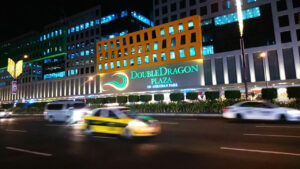MEGA mindset

LOOMING ROAD repairs along Epifanio delos Santos Avenue (EDSA) are already causing a lot of motorists to gnash their teeth and have nightmares of a traffic meltdown in Metro Manila.
EDSA, of course, is the main thoroughfare traversing the north and south axes of the metropolis. A report by ABS-CBN last December placed the number of vehicles passing through EDSA every day at 464,000. The clincher, according to the same report: This volume of traffic is nearly double EDSA’s carrying capacity of 250,000 vehicles — and has exceeded it since 2012.
EDSA used to be called Highway 54 before it was subsequently renamed MacArthur Boulevard in 1945. The year after, it became known as Avenida 19 de Junio — commemorating the birth date of national hero, Jose Rizal. It was only in 1959 that it received its present name to honor the Rizaleño historian, jurist, and scholar: Epifanio de los Santos y Cristobal.
Road construction started back in 1939 and the main artery was partially opened in 1940 just before World War II. In the 1950s, the northern end of EDSA was designated as the Bonifacio Monument in Caloocan. Work continued, expanding it from two lanes to four. It was only in the 1960s that the Guadalupe Bridge was constructed to connect the northern and southern segments of EDSA. In the south, the end point is the EDSA Extension that crosses Roxas Boulevard and terminates at the rotunda in front of the Mall of Asia.
EDSA is the longest and, unfortunately, the most congested highway in the Metro Manila area. It runs 23.8 kilometers and passes six of the 17 local government units in the metropolis. Traffic crawls especially during the rush hours. Last December, the Metropolitan Manila Development Authority (MMDA) reported that the average speed along EDSA was expected to slow from 21kph to 15kph at the peak of the yearend holiday season.
I travel on EDSA every day to and from work. I live in Mandaluyong and my office is in Makati. Actually, I have walked along EDSA to the office a few times as part of my cardio workouts on weekends. It’s not that far — it took my legs about an hour and a half to cover eight kilometers or so. On the other hand, when I take the car to work in the mornings, it takes me about 20 minutes if leaving my place of residence at around 6:30 a.m. Going home, however, is a whole other story — taking about 40 to 60 minutes. If I leave the office at the peak rush hour of around 5 to 6 p.m., getting home can take as long as 90 to 120 minutes. It would be faster, require less patience, and even be healthier (minus the smog) if I just walked the distance.
Probably the most dreadful part of the scheduled road repairs will be work done on the aforementioned Guadalupe Bridge. It is, even now, already a choke point in the daily drive or commute. In fact, repair of the bridge was initially reported to start late last year but was deferred in consideration of the usual Christmas “car-mageddon.” The latest report from the Department of Public Works and Highways (DPWH) is that repairs will have to start this month. Roadworks on the northbound lanes will precede those of the southbound ones.
One hopes that the worry might be misplaced. I had a similar sense of dread last year when work on the Kamuning flyover was announced. As it turned out, there were some disruptions as a result of rerouting, but it seemed that the MMDA and local police units managed to keep things under control. They did an extensive communication campaign preceding the closure of lanes so motorists could identify alternative routes. I believe that maximum tolerance was also practiced in consideration of possible confusion among drivers. This will be even more critical this time around. I urge calm and think we should wait for official announcements rather than let our imagination get ahead of us.
Clearly, there is a way of managing road use so that maintenance work can proceed smoothly. In the first place, motorists need to accept that there is no avoiding the work that needs to be done. Due to age and heavy use, EDSA has, indeed, deteriorated. As I pointed out at the start, the number of vehicles plying the highway is twice its carrying capacity. Driving along its breadth, one is sure to notice that it is full of patchwork — much like a heavily injured person covered with Band-Aids. As is wont to happen, the “Band-Aids” peel off and the road sores reappear. Any vehicle operator knows to step on the brakes or take the foot off the gas when manuevering around potholes or unevenly paved roads. In turn, this causes traffic to slow down, leading to unnecessary and inordinate delays.
With acceptance comes patience and perseverance — from both motorists and traffic enforcers. One thing we can be sure of is that repairs will be completed at some point. In fact, I noted that the repaving of the northbound lanes between Kalayaan and Guadalupe was done with minimal disruption. If we follow alternate traffic instructions, we allow the road crews to do their job quicker and complete their repairs sooner. Hopefully, work can be hastened during the summer.
I am encouraged by the resolve of the government to take on the repair and upgrade of EDSA now. There really is no putting it off. It is necessary to protect the driving and riding public. The mantra should be “safety first, always.” Then, of course, the elimination of potholes, uneven road surfaces and other impediments should — nay, must — result to a smoother traffic flow, getting us from point to point in greater comfort and less time. Let us be a part of the solution by following directions of traffic enforcers, keeping out of the way of road repair crews, and allowing them to get the job done sooner rather than later.




